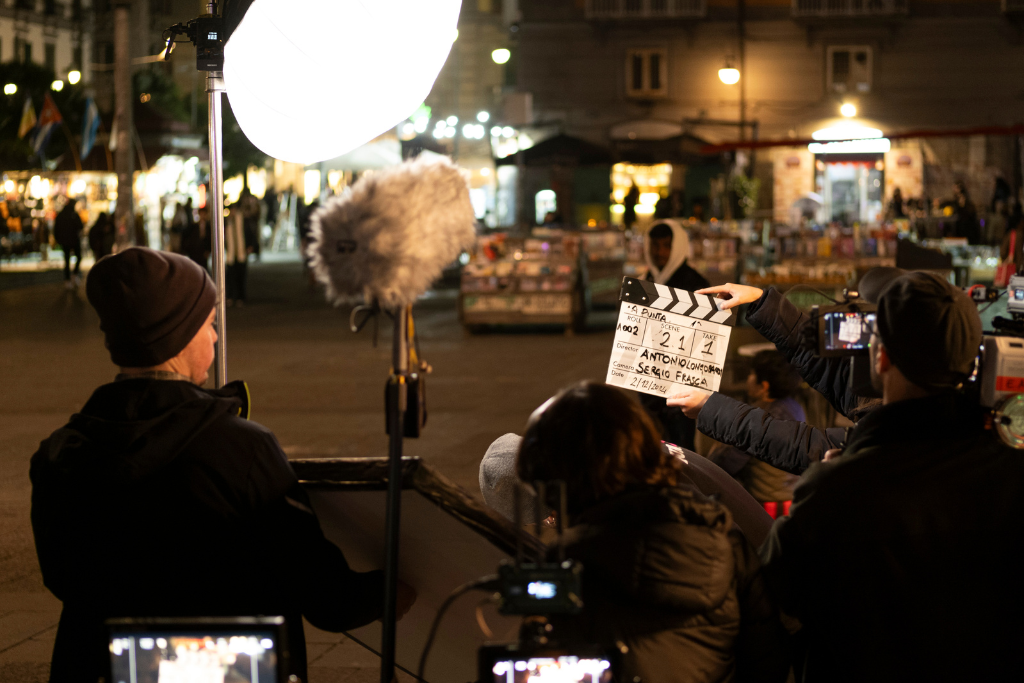
Filmmaking is a delicate balance of art and logistics, especially in indie productions where every decision counts. In ‘La Punta’, a short film by Neapolitan director Antonio Longobardi, DIT Diego Vitale and DoP Sergio Frasca worked together to create a workflow that enhanced the film’s cinematography while managing the constraints of a smaller production.
From Script to Screen: Bringing La Punta to Life
La Punta tells the story of a young man working as a waiter while dreaming of making a film. As he navigates his daily struggles, encounters with various people shape both his life and the story he wants to tell. The film explores the challenges of breaking into the industry while balancing reality and aspirations, and is intermixed with dreamlike sequences where the protagonist meets those who left a lasting mark on him.
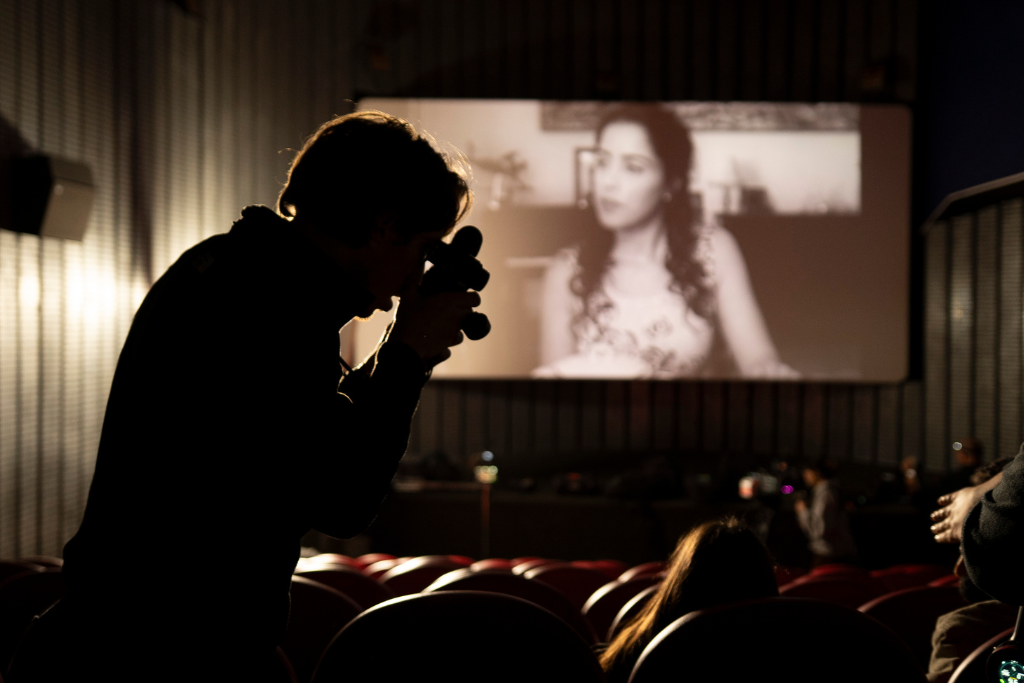
Sergio Frasca, Director of Photography.
Sergio was first brought onto the project by producer Andrea Bifulco of Alchemia Pictures SRL to handle cinematography. Drawn to the visual storytelling opportunities, he carefully crafted a look that emphasized the lights and textures of Naples. To ensure the best possible workflow, he brought in Diego to develop a pre-visualization of the film’s aesthetic and maximize the potential of the chosen camera setup.
Creating the Visual Distinction: Reality vs. Dreams
One of the major creative points in La Punta was visually differentiating the protagonist’s reality from his dreamlike sequences. Diego and Sergio approached this by carefully selecting lenses, filters, and lighting setups that would shift the tone between the two worlds.
“To create a clear distinction between dream and reality, we primarily used Black Pro-Mist filters in the dream sequences,” they explain. “This gave us an image with more open contrasts, while Sergio opted for stronger, almost ethereal lighting in those scenes.”
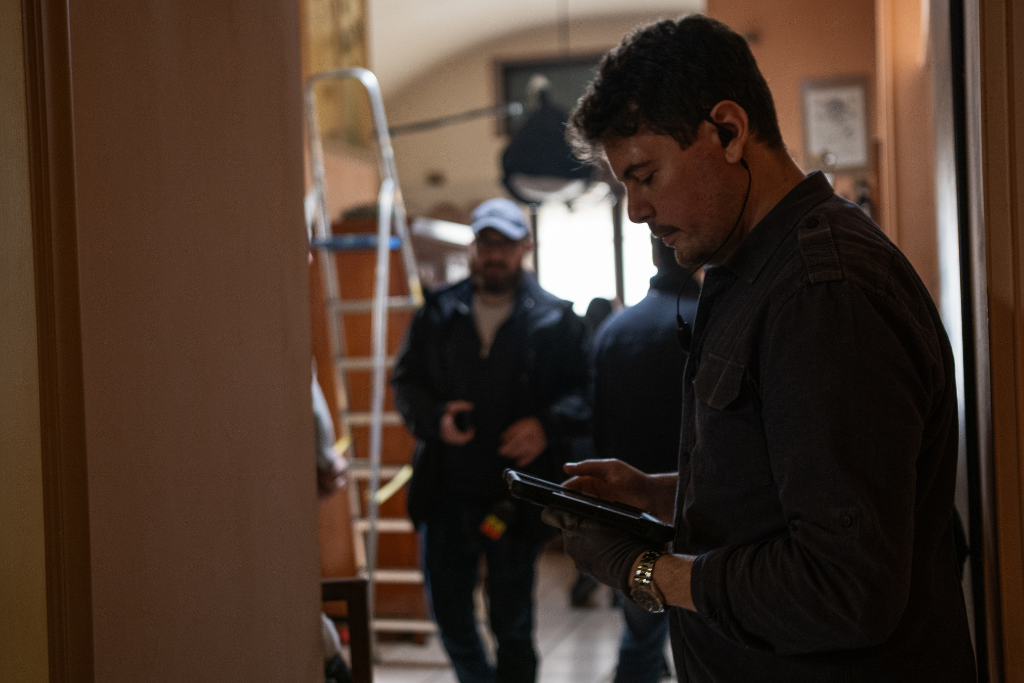
Fabio Niro, Gaffer.
For the more grounded, realistic moments, they leaned on practical light sources such as neon signs and other ambient lighting. After testing various options, they ultimately shot on the Blackmagic Cinema Camera 6K, favoring its resolution, BRAW file flexibility, and particularly its skin tone rendition. Paired with Sirui Jupiter lenses, which offered excellent close-focus capabilities, the setup allowed them to achieve a distinct yet cohesive aesthetic.
Designing an Efficient Workflow on a Limited Set
With many scenes taking place in tight interiors and on-location night shoots, the team had to be strategic about their workflow. Without the option for live grading, Diego developed creative LUTs to give Sergio a reliable preview of the final look using a SmallHD monitor that converted the camera’s Log footage.
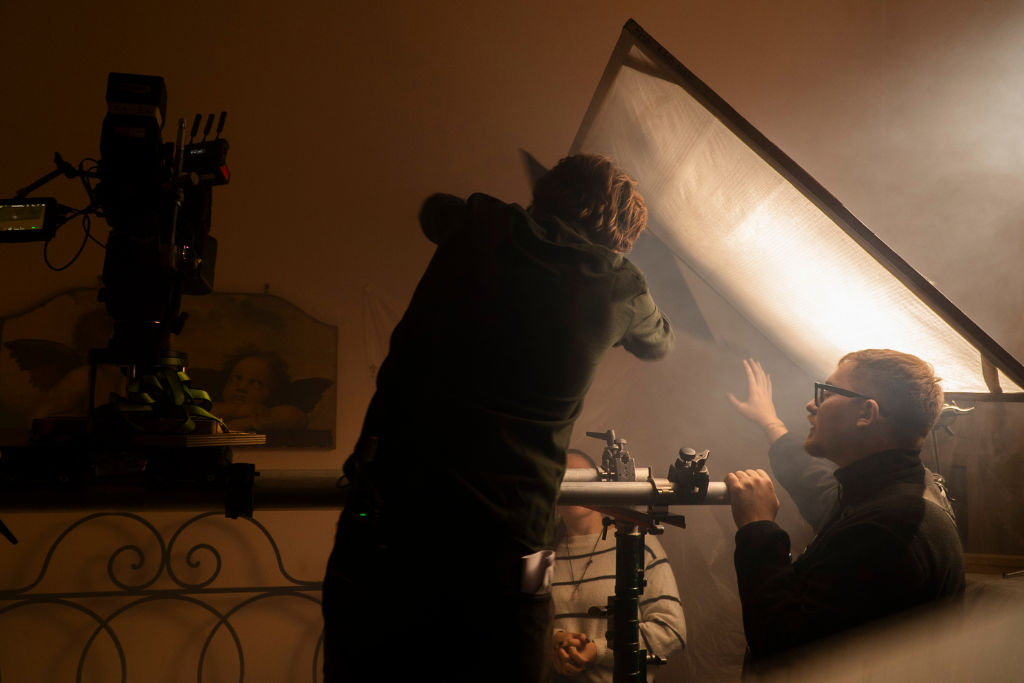
Lighting setup for an interior shot.
“On set, we had Nunzia, our Data Manager, who used ShotPut Studio to archive the footage in triplicate,” Diego shares. “At the end of each day, she also created stills with the creative LUT applied, ensuring we had a clear visual reference while maintaining a structured workflow.”
This system allowed them to stay efficient while capturing high-quality footage without unnecessary data loss – maintaining a film-like workflow even on a short film.
Overcoming Challenges: Night Shoots and Small Spaces
Shooting on location in Naples came with its own set of challenges, particularly when working outdoors at night. The team needed to control exposure without overblowing the background, all while operating at the camera’s native ISO of 400. Their solution? Working at T2.8 and using a mix of diffused light sources, including a China ball and LED lights powered without generators.
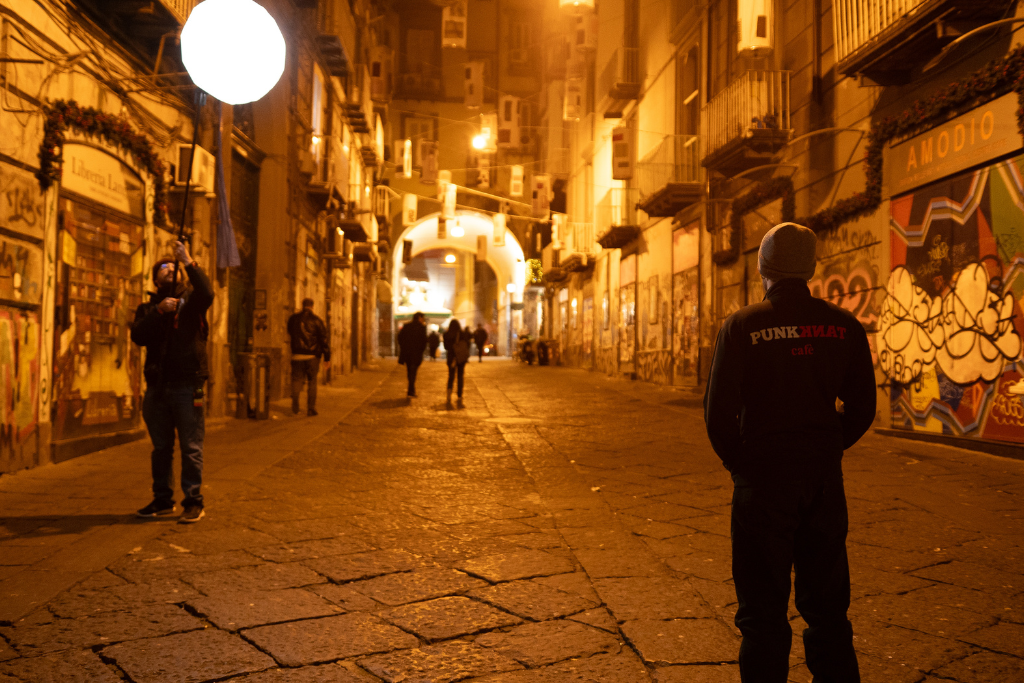
Night shoot using a diffused china ball light.
“For interiors, space was an even bigger constraint,” they recall. “Since we couldn’t light through windows, we relied on Light Bridges to bounce light from a distance, allowing us to illuminate scenes naturally without cluttering the space.”
The Indie Filmmaking Spirit
Despite the hurdles, La Punta came together through the dedication of its cast and crew.
“Balancing creativity with technical efficiency is key,” Diego and Sergio note. “By refining our workflow, we were able to focus on the storytelling without getting bogged down by logistical challenges.”
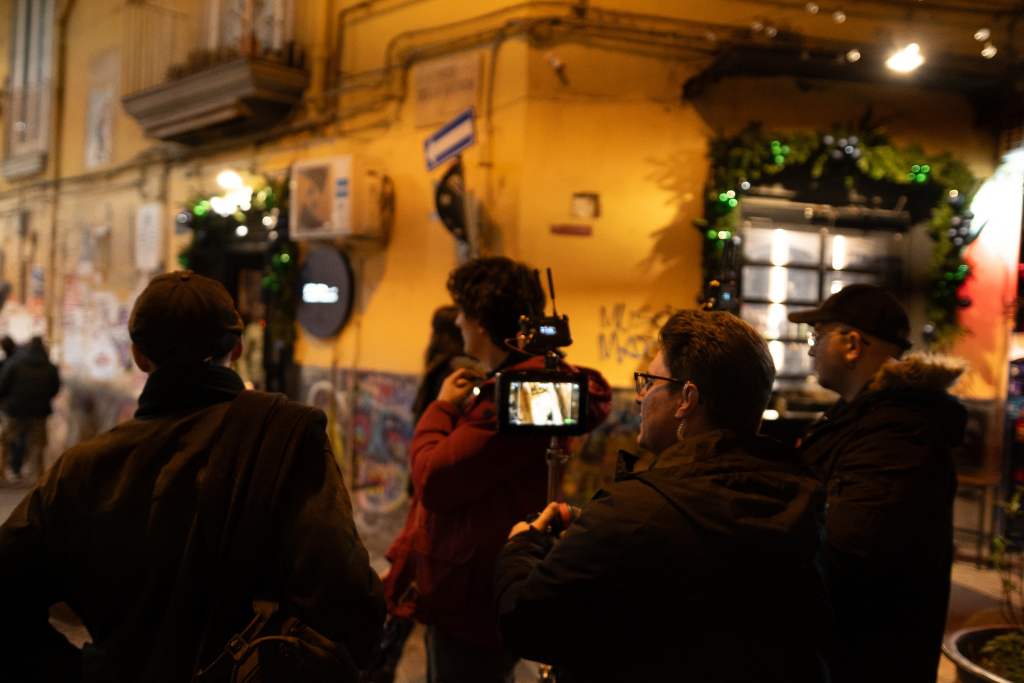
Diego Vitale, adjusting the exposure settings.
As La Punta finishes up its post-production, the work done behind the scenes is a testament to how independent filmmakers can achieve high production value through smart planning, collaboration, and a deep understanding of workflow.
A huge thank you to both Diego and Sergio for taking time out of their busy schedules to sit down for this interview. Stay tuned for updates later this year on La Punta and where it can be viewed.